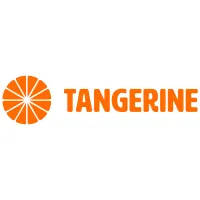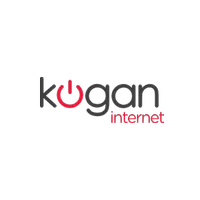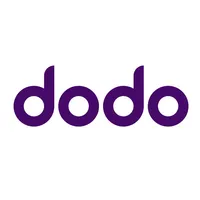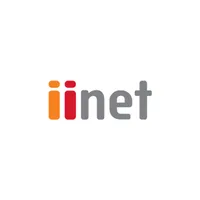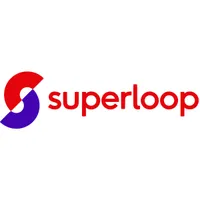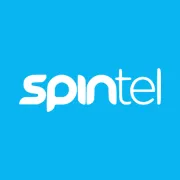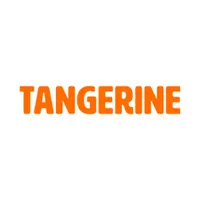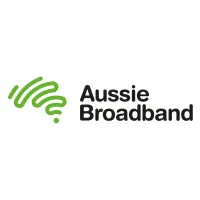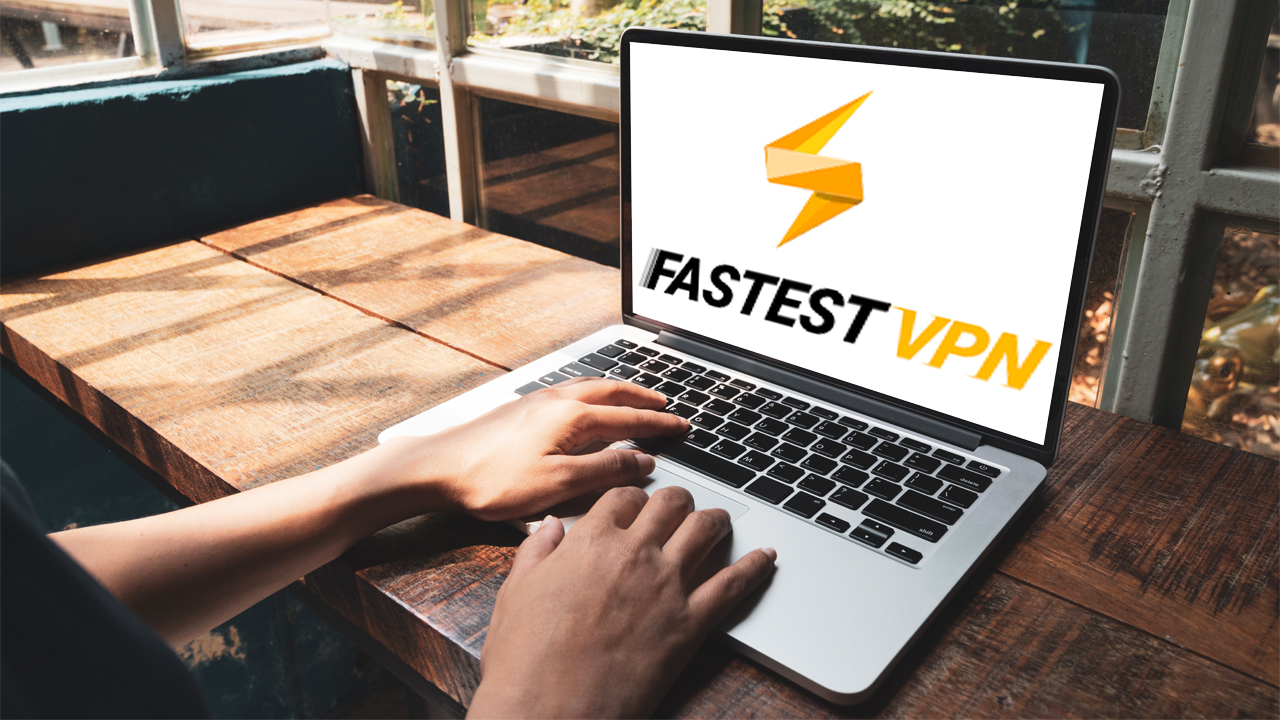Best NBN deals in Australia November 2025
We track down the best NBN discounts and deals currently available

The best NBN plans in Australia offer affordable options for homes and businesses to connect to the internet. However, there is a lot to consider when selecting a new home internet plan, including your budget, current telco provider, customer support, and most importantly, your preferred speed tier.
Here at Tom's Guide, we value transparency in our guides to finding home internet deals. Every month, we conduct a deep dive into the best NBN deals, providers and more, so you can get the most out of your hard-earned cash, without compromising on stellar service or hyperfast speeds.
From NBN 500 plans to the mega NBN 2000, we've tracked down all the best deals on these turbocharged tiers, and popped them below. We've compared top plans from telcos nationwide, including the big three (Optus, TPG, and Telstra), as well as smaller, privately owned telcos.
ISPs often offer a standard six-month discount for new customers, and sometimes (yet very rarely), they may offer a 12-month discount, particularly in the lead-up to Black Friday. We've already seen some providers jump on board ahead of the big sale at the end of this month.
In this comprehensive guide, we've split the best deals by NBN speed so you can easily search for your preferred speed tier. Follow the quick links to jump ahead, or learn more about choosing an NBN plan in our FAQ section.

Meet Lucy - Tom's Guide Australia's resident expert in all things internet and NBN plans. She curates this page every month with the best NBN deals from Australia's top providers. She loves to keep tabs on all the NBN speed data and pricing research so you don't have to!
Best NBN 50 deals
Perfect for up to 4 users, HD streaming and seamless video calls
Tangerine | AU$64.90p/m (for 12 months, then AU$84.90p/m)
Right now, fruity provider Tangerine has the cheapest NBN 50 offering. During its Black Friday sale, you'll save AU$20 a month over your first year — that’s AU$240 total — before the price increases to AU$84.90p/m.
Tangerine is also currently offering a referral bonus of AU$50 if you refer someone to the service, so you’ll both get AU$25 credit towards your monthly NBN bills.
Total minimum cost: AU$64.90 | Total first year cost: AU$778.80 | Yearly cost after discount: AU$1,018.80
Kogan | AU$60.90p/m (for 6 months, then AU$80.90p/m)
Kogan’s Silver Unlimited NBN 50 clocks in with evening speeds of 50Mbps and 17Mbps uploads, which is pretty typical across the speed tier. However, thanks to this initial discount offer, you'll save AU$20p/m over the first three months — that's AU$120 — before the price increases.
Moreover, the plan's first 12-month cost of AU$850.80 is one of the cheapest NBN 50 plans. Kogan also offers you its Internet Price Pledge, so if you find a better price on the same NBN plan, Kogan will give you back double the difference.
Total minimum cost: AU$60.90 | Total first year cost: AU$850.80 | Yearly cost after discount: AU$970.80
Dodo | AU$60.99p/m (for 6 months, then AU$85.99p/m)
If there's one thing this flightless bird knows, it's a damn good deal. With a nice AU$150 discount over the first six months, Dodo's NBN 50 plan will net you 50Mbps downloads during the typical evening hours.
Sure, you'll spend around AU$30 more than Kogan's plan in the first year, but that doesn't dismiss Dodo's rave reviews for its customer service.
Total minimum cost: AU$60.99 | Total first year cost: AU$881.88 | Yearly cost after discount: AU$1,031.88
Best NBN 100 deals
Great choice for larger families and households with high usage
Tangerine | AU$68.90p/m (for 12 months, then AU$88.90p/m)
Just AU$4 more per month than its NBN 50 offering, Tangerine's Black Friday deal is hard to beat. Slicing a massive AU$240 off the entire first year, you'll only pay AU$68.90p/m before the price increases next November.
Considering NBN 100 plans currently average AU$94.19p/m, this plan shaves AU$25.29p/m off! What a win. If you have an FTTP or HFC connection, this plan costs the same as Tangerine's NBN 500 offering, so you could be getting more value for money. You can check it out in our best NBN 500 deals section below.
Total minimum cost: AU$68.90 | Total first year cost: AU$826.80 | Yearly cost after discount: AU$1,066.80
Dodo | AU$62.99p/m (for 6 months, then AU$92.99p/m)
Dodo currently offers one of the most attractive NBN 100 plans, slashing a massive AU$180 off the first half year with this low introductory rate of AU$62.99p/m.
Even once the price increases, you'll still spend less than the average NBN 100 cost, currently AU$94.19p/m. That said, if you have an FTTP or HFC connection type at home, you may want to consider Dodo's NBN 500 plan, as it costs the same as this one, but provides 5x more speed. You can check it out in our best NBN 500 deals section below.
Total minimum cost: AU$62.99 | Total first year cost: AU$935.88 | Yearly cost after discount: AU$1,115.88
iiNet | AU$79.99p/m (for 12 months, then AU$94.99p/m)
Much like Tangerine's deal above, this iiNet introductory rate extends throughout the entire first 12 months during its Black Friday sale.
You'll save AU$15p/m — that's AU$180 total — before the price increases to a still competitive AU$94.99p/m ongoing. But for me, the most impressive thing about this deal is that it hails from a Big Three subsidiary, and it surely won't stick around long!
Total minimum cost: AU$79.99 | Total first year cost: AU$959.88 | Yearly cost after discount: AU$1,139.88
Best NBN 250 deals
Perfect for gamers, streamers, and doing almost anything online
Superloop | AU$85p/m (for 6 months, then AU$99p/m)
Advertising theoretical maximum speeds of 250Mbps during the evening hours, Superloop's NBN 250 plan is down to just AU$85p/m for the first 6 months. This AU$14p/m discount makes it one of the cheapest superfast offerings, with plans averaging AU$106.93p/m. This plan also packs supercharged upload speeds of 85Mbps, which is above the average of 25Mbps on the tier.
You can also boost your speeds to ultrafast heights if you like, by using the five free Speed Boost days every month. Do note, this deal is only available to those with FTTP or HFC connection types.
Total minimum cost: AU$85 | Total first year cost: AU$1,104 | Yearly cost after discount: AU$1,188
Best NBN 500 deals
Great for families with multiple devices, gaming, 4K streaming and more
Dodo | AU$62.99p/m (for 6 months, then AU$92.99p/m)
Dodo currently offers one of the most attractive NBN 500 plans, slashing a massive AU$180 off the first half year with this low introductory rate of AU$62.99p/m. This plan costs the exact same as Dodo's NBN 100 offer above, so if you have an FTTP or HFC connection at home, Dodo's got you sorted with 5x more speed for an identical low price.
Total minimum cost: AU$62.99 | Total first year cost: AU$935.88 | Yearly cost after discount: AU$1,115.88
SpinTel | AU$64p/m (for 6 months, then AU$86.95p/m)
Advertising a monstrous 500Mbps across all hours, SpinTel's latest plan will set you back AU$64p/m for the first 6 months, before increasing to AU$86.95p/m ongoing. This is a huge step for the telco, beating out other providers and NBN Co's own launch of NBN 500 plans. And, it's even cheaper than SpinTel's own NBN 100 plan, chopping AU$2 off per month.
With 500Mbps downloads and 42Mbps uploads, SpinTel's Home Turbo plan is ideal for lag-free gaming, streaming and remote work, supporting 4K video calls, downloading game patches and 4K viewing simultaneously. And like other high-speed plans, you'll need an FTTP or HFC connection to order this service.
Total minimum cost: AU$64 | Total first year cost: AU$$905.70 | Yearly cost after discount: AU$1,043.40
Tangerine | AU$68.90p/m (for 6 months, then AU$88.90p/m)
Clocking in at 500Mbps maximum speeds during the evening hours, Tangerine's plan is by far one of the cheapest and speediest on offer right now. Slicing AU$20p/m off the first 12 months — that's AU$240 total — before the price increases, this plan is hard to beat.
Total minimum cost: AU$68.90 | Total first year cost: AU$826.80 | Yearly cost after discount: AU$1,066.80
Best NBN 750 deals
A step up from 500Mbps, a perfect median for high-speed homes with multiple users, smart devices, 4K streaming and gaming.
Flip | AU$78p/m (for 8 months, then AU$89.90p/m)
Flip currently offers the cheapest NBN 750 plan, saving you AU$95.20 in the first year, thanks to an extended introductory offer. Flip's Super Speed plan (which advertises typical evening downloads of 750Mbps) will set you back just over AU$980 for the first 12 months.
And don't assume that a cheap plan means a cheap service, as there's a wealth of positive reviews online at ProductReview.com.au. If you have the connection type to support it, this budget-friendly plan could be the right option for you.
Total minimum cost: AU$78 | Total first year cost: AU$983.60 | Yearly cost after discount: AU$1,078.80
Dodo | AU$74.99p/m (for 6 months, then AU$99.99p/m)
Dodo's Superfast 750Mbps plan savings do come in at AU$150 for the first six months, which is no surprise here. But what's mighty impressive about this offer is that its ongoing rate is well under the average of AU$106.55 for the tier.
And it only costs AU$1,199.88 per ongoing year after the discount ends. We find this fee to be relatively modest, especially when compared to competitors' exorbitant costs, like Telstra's AU$1,560 or Optus' AU$1,428 yearly rates.
Total minimum cost: AU$74.99 | Total first year cost: AU$1,049.88 | Yearly cost after discount: AU$1,199.88
Best NBN 1000 deals
Now the second-fastest NBN speed available, but only for customers with FTTP and HFC connections.
Swoop | AU$85p/m (for 6 months, then AU$109p/m)
Advertising an eyewatering 890Mbps download speeds during the typical evening hours of 7pm to 11pm, Swoop's Home Ultrafast plan is the fastest NBN 1000 plan right now.
The only caveat is that a few other providers are claiming full 1Gbps speeds; however, there isn't enough accurate data available for us to recommend those. That's why we chose Swoop, as this speed claim has been consistent since late last year. It does cost the same as Superloop's plan below, but with slightly faster speeds, Swoop's got our pick this month.
Swoop is pretty highly regarded by gamers, remote workers and streamers across reviews, with customers raving about speedy connection times.
Total minimum cost: AU$85 | Total first year cost: AU$1,164 | Yearly cost after discount: AU$1,308
Superloop | AU$85p/m (for 6 months, then AU$109p/m)
Right now, Superloop's gigabit plan has been slashed by a massive AU$24p/m over the first six months, offering a nice AU$144 discount.
Advertising lightning-fast speeds of 860Mbps in the busy evening hours, Superloop's speed claims are some of the fastest available on the tier, coming in just behind Flip's 900Mbps, Swoop's 890Mbps and Buddy Telco's 875Mbps.
This deal offers incredible value for money, as the AU$85p/m cost is far cheaper than some of the major telcos’ 50Mbps plans — and delivers 17.2 times the maximum speeds. If you need all the megabits, Superloop's got ‘em.
Total minimum cost: AU$85 | Total first year cost: AU$1,164 | Yearly cost after discount: AU$1,308
Best NBN 2000 deals
It’s the fastest NBN speed available, but only for customers with FTTP and HFC connections.
Superloop | AU$145p/m (for 6 months, then AU$165p/m)
Hot off the press is Superloop's Hyperspeed plan, which advertises theoretical maximum potential speeds of 2,000/200Mbps on FTTP, or 2,000/100Mbps on HFC. These seriously hyperfast speeds can accommodate the largest of families with the most demanding users, providing more than enough bandwidth for high-res streaming, gaming and video calls at the same time.
Slicing AU$20p/m off the price for the first six months, you'll save an impressive AU$120 in total. Considering NBN 2000 plans average around AU$174p/m right now (based on our calculations using seven providers), this is a good deal shy of that.
So, if you're keen to have all the megabits on offer with a 2Gbps plan, Superloop's has our tentative stamp of approval.
Total minimum cost: AU$145 | Total first year cost: AU$1,860 | Total yearly cost: AU$1,980
Aussie Broadband's hyperfast lineup goes beyond other providers with not one, but three plans under the 2Gbps umbrella.
ABB separates its FTTP and HFC customers into different plans, with the former technology capable of a maximum of 200Mbps uploads, while HFC customers will only see (at most) half that, at 100Mbps. Both are priced at AU$189p/m.
Aussie's extra 2Gbps offering is its Hyperfast Pro plan, which claims a massive 500Mbps uploads for $220p/m (or an extra AU$31). Aussie doesn't yet have real-world figures for what kinds of top speeds these plans will deliver, so if you sign up now you'll need to be prepared to be a bit of a guinea pig.
Total minimum cost: AU$189 | Total yearly cost: AU$2,268
NBN FAQ
What NBN do I have?
If you’re unsure what type of NBN connection you have, there's two ways of checking. You can check your address on the NBN Co website, or go to any telco’s NBN page, where you’ll be prompted to enter your address to see what’s available to you.
The important thing to note is that the connection type that is available at your address is largely out of your control. NBN Co has announced it is upgrading select suburbs in the network to full fibre – you can find a list of the announced suburbs here.
Does NBN need a special modem?
You will need a compatible modem to connect to the NBN, and your NBN provider can provide this to you. It often comes at an additional upfront cost, while other telcos will let you keep the modem for free if you stay connected for a predetermined amount of time. Many internet providers will also allow you to bring your own modem to the service, but we recommend checking compatibility with your chosen provider when you first sign up.
Are NBN plans unlimited?
The vast majority of NBN plans do come with unlimited data, though there are some occasional exceptions. In these cases, telcos should clearly signpost when specific NBN plans come with a capped amount of data, so do read thoroughly before signing up. With competitive pricing in all speed tiers, unlimited data NBN plans offer far better value for money for most people, so only choose a capped plan if you’re certain it meets your needs.
What NBN speed should I get?
Deciding what NBN speed you want can be tricky, but the answer largely depends on how many people are living in your household and what their level of usage is. Here, we break down each NBN speed tier:
NBN 12 (Basic 1):
An NBN 12 plan will only get you 12Mbps of download speed and 1Mbps of upload. In general, we wouldn’t recommend signing up for this tier unless you’re only using it for email and light browsing – streaming will struggle.
NBN 25 (Basic II):
The NBN 25 tier gets you 25Mbps of download and 5Mbps of upload. It’ll suit a one- or two-person household best, and will allow you to use the internet at the same time, and stream video in HD.
NBN 50 (Standard):
An NBN 50 plan provides up to 50Mbps download and 20Mbps upload, and is best for households with 2 to 4 users. Its download speed will allow multiple people to stream in HD at the same time, play games online and have smooth video calls.
NBN 100 (Fast):
You’ll often see these plans referred to as either NBN 100/20 or NBN 100/40, and that’s because they have download speeds of up to 100Mbps, and an upload speed of either 20Mbps or 40Mbps, depending on the plan. They suit large households best, with room for five or more people, some 4K streaming, online gaming and big file downloads.
NBN 250 (Superfast):
With download speeds of up to 250Mbps and upload speeds of 25Mbps, an NBN 250 plan will allow you to do almost anything online, such as streaming multiple videos in 4K, downloading large files faster and online gaming without lag. Do note though, only fibre-to-the-premises (FTTP) and hybrid fibre coaxial (HFC) connections can sign up.
NBN 500 (Fast II):
This new tier increases the wholesale speeds on NBN 100 plans with FTTP or HFC connections to a massive 500Mbps downloads and 50Mbps uploads. These changes came at no extra cost to ISPs and, for the most part, consumers, with providers passing on upgrades for no additional fee. They suit large households best, with room for up to 10 users with multiple devices, 4K streaming, online gaming and more.
NBN 750 (Superfast):
Upgrading the current tier, the new 'superfast' offer boosts 250Mbps plans for FTTP and HFC connections to 750Mbps downloads and 50Mbps uploads, offering 3x faster speeds. This tier will eventually phase out the other, but some providers are still offering the slower plan for the time being.
NBN 1000 (Ultrafast):
The NBN 1000 tier is now the second-fastest consumer speed available, coming with downloads of up to 1,000Mbps, and uploads of up to 50Mbps. Among the few telcos that offer these plans, there’s quite a difference in typical evening speed: Flip has the highest at 900Mbps, while other providers range between 600Mbps and 850Mbps. Again, this speed is only available to those with FTTP and select HFC connections.
NBN 2000 (Hyperfast):
The NBN 2000 tier has now overtaken the 'ultrafast' tier as the fastest internet speeds available in Australia, claiming to reach theoretical maximums of 2,000Mbps downloads and up to 200Mbps uploads. However, due to the infancy of the tier, true speed data has yet to be recorded.
How do I test my NBN speed?
Before you start an NBN speed test, check your plan so you know what speed you should be getting. Once you’re connected to the Wi-Fi network you want to test, go to the website Speedtest, and click start to begin your test.
The test should take no longer than a minute, and once you’ve got your results, compare them to your plan’s advertised download and upload speeds. Don’t worry if it’s not an exact match, but you will want your plan to be close to reaching, or exceeding its reported speeds.
Some external factors such as your NBN connection type can affect the result. For example, if you have a fibre-to-the-node (FTTN) connection, your homes’ distance from the node could play a part in poorer results, particularly if your address is more than 400 metres away from it. Your distance from your home’s modem can also be a factor – you’ll want it to be close to get the best result.
If you find that your plan’s NBN speed isn’t up to scratch, your first port of call should be your NBN provider. Get in touch with your provider’s customer service team to raise your concerns, and if they’re unable to help, consider switching to a different service provider.
Which NBN provider is best?
The best NBN provider for you will vary with your needs, but we recommend SpinTel as the best NBN provider for most people. Over half of all NBN connections are on an NBN 50 plan, and with this in mind, we’re choosing SpinTel because it has the best-value option in the popular tier.
Is NBN 5G?
No, the national broadband network (NBN) and 5G are two separate technology types, though both allow you to connect to the internet. The NBN is government-owned infrastructure that has been rolled out across the country by NBN Co. It uses fibre, and existing copper wire, to connect homes to the NBN. For more rural and remote areas of Australia, NBN Fixed Wireless and Sky Muster satellite are used.
5G infrastructure is owned by the telcos, primarily Telstra and Optus. 5G home internet offers another way for Australians to connect to the internet, though its availability is far behind that of the NBN, with 5G coverage being best in the capital cities. Rather than using fibre or copper to connect you to the internet, 5G connects you over a wireless network.
How can I check for NBN outages?
If your internet isn’t working, you’ll first want to figure out whether it’s just your household experiencing a problem, or if there’s a wider NBN network outage. You can figure this out by going to your internet provider’s service status page, or check NBN Co to see if network maintenance or outages have been reported. You can also check the independent website Down Detector. For more help, see our sister site TechRadar’s comprehensive guide to NBN outages.
Get instant access to breaking news, the hottest reviews, great deals and helpful tips.

Lucy Scotting is a digital content writer for Tom’s Guide in Australia, primarily covering NBN and internet-related news. Lucy started her career writing for HR and staffing industry publications, with articles covering emerging tech, business and finance. In her spare time, Lucy can be found watching sci-fi movies, working on her dystopian fiction novel or hanging out with her dog, Fletcher.
